UltraDart, SuperVOOC, HyperCharge and more: the battle of the fast chargers
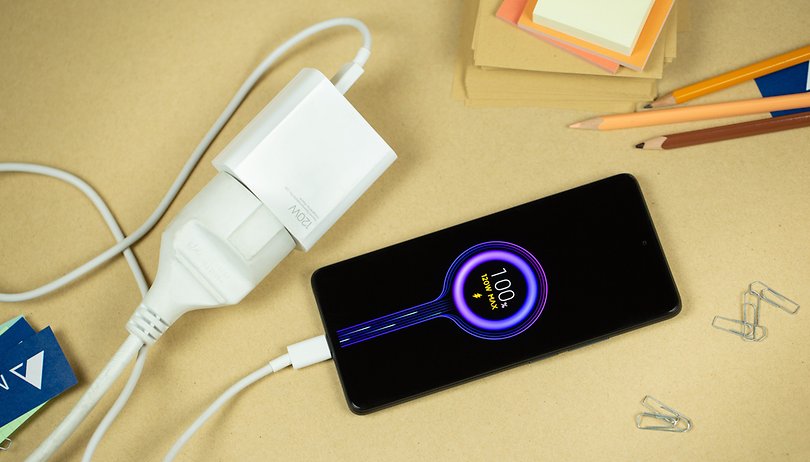

Just as quick-charging phones became popular, manufacturers started to not include the required chargers in the box. But should you buy an original charger or does fast charging also work with other models? We answer the most important questions about current technologies like USB-PD, Quick Charge, Dart, VOOC, and others.
How convenient is it to be able to half-charge your phone in just a few minutes before leaving the house thanks to a fast charger? Warp Charge, Super VOOC, and Quick Charge are important technologies, but manufacturers have also caused quite a bit of chaos in the battle for the best charging technology. In the following table, you can see which manufacturer uses which technology with which performance:
Fast charging standards head-to-head
| Name | Manufacturer | Third-party chargers? | Technical data (max.) |
|---|---|---|---|
| USB-PD | USB Implementers Forum | Yes | 240 W / 48 Volt / 5 Ampere |
| Quick Charge 5 | Qualcomm | "more than 100 W" (20 Volt / 5+ amps) | |
| SuperVOOC | Oppo | No | 240 W** 125 W / 20 Volt / 6.25 Ampere |
| UltraDart | Realme | 200 W** 125 W / 20 Volt / 6.25 Ampere |
|
| IQOO Super Flash Charge | Vivo | 120 W / 20 Volt / 6 Ampere | |
| Xiaomi HyperCharge | Xiaomi | ||
| Warp Charge | OnePlus | 65 W / 10 Volt / 6.5 Ampere | |
| Apple Lightning | Apple | Yes | 20 W / 9 Volt / 2.2 Ampere |
| Pump Express 4.0 | MediaTek | n/a | n/a** |
| ** announced but unreleased | |||
But do Oppo, OnePlus and Xiaomi really outperform popular manufacturers like Samsung and Apple, or are there reasons against the fast technologies? To understand this, let's consider what actually happens during fast charging.
Cell phone fast charging: How does it work?
Lithium-ion batteries are used in smartphones. The capacity of the battery, which is usually between 3,000 and 7,000 mAh, can supply the various components of the phone with power for several hours or days. If the battery is empty, i.e. all the lithium ions have migrated from the negative electrode to the positive, this process can be reversed by an external power supply and the battery recharged.
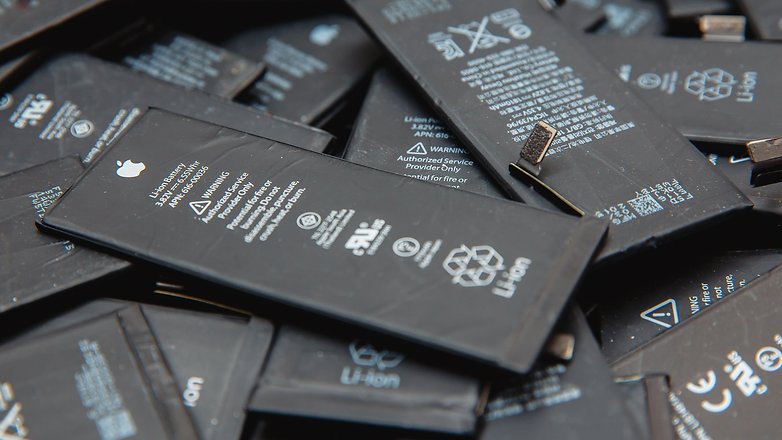
This is exactly where the wheat is separated from the chaff when it comes to fast charging technologies. That's because modern fast-charging technologies turn on the tap when it comes to the charger's wattage, the voltage in volts, and the current in amps. Oppo's SuperVOOC 125 uses a 125-watt charger and charges at a maximum of 20 volts at 6.25 amps.
At the same time, the manufacturer splits the required battery power between two batteries, allowing it to power both halves separately. So instead of filling a large pool through a single faucet, two pools are filled with two faucets. Without increasing the load on each individual battery, the speed is thus doubled.
Unfortunately, smartphone manufacturers have developed their own standards and have increasingly deviated from the former USB-PD and Qualcomm's Quick Charge standards in recent years. Therefore, you definitely have to pay attention to whether your charger supports the required protocols, even if it supports the technical requirements for charging. Of course, we will also take a look at that.
Current fast charging standards in a nutshell
USB-PD: An important requirement
Every Android phone offers a USB port for charging and data transfer, and thus the maximum charging speeds always depend on the USB standard. With USB-PD (USB Power-Delivery), there has been an attempt for several years to bring the standardize on the USB plug for portable electronic chargers.
Nowadays, not only smartphones but also notebooks and larger gadgets can be charged with one power supply at high speeds. USB-PD is usually offered in combination with USB-C. Since more and more devices support this standard, you can, for example, charge a Google Pixel 6 Pro with the same adapter used with the MacBook Air, while still using the fast charging option.
In 2021, the USB-IF - USB Implementers Forum - announced revision 3.1 of the USB-PD specification, which added three new voltage options for the USB-C spec: 28 V, 36 V, and 48 V, allowing charger output to reach 140 W, 180 W, and 240 W. These were not necessarily designed for phones but could theoretically be used for our mobiles.
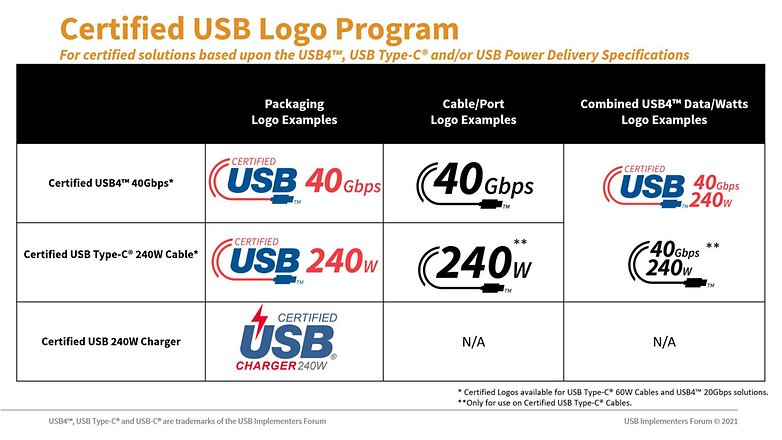
While USB-PD primarily offers advantages when charging multiple devices simultaneously via a USB plug, there is also the USB-PPS protocol. The "Programmable Power Supply" standard isn't directly related to charging faster but impacts efficiency and safety while charging.
When charging using a compatible device and adapter, the phone (or tablet, PC, etc.) can periodically request changes in voltage and current to the charger, which can be raised when the batteries are cool or lowered when the device starts to get too warm. This level of control may not offer the fastest charging speeds possible, but can potentially prolong the lifespan of the battery.
Qualcomm's Quick Charge
The chip manufacturer Qualcomm offers the "Quick Charge" standard, which can be found in most Android smartphones in the last few years. This is because Qualcomm is one of the biggest suppliers of phone processors and was one of the first companies to propose a fast-charging standard, still back in the old micro-USB days.
Largely interoperable with USB-PD and PPS, Quick Charge 5 promises more than 100 watts at 20 volts and 5+ amps. The QC5 standard can be found on devices like the Asus ROG Phone 5, Xiaomi 11T Pro, and Nubia RedMagic 6 Pro, usually with lower wattages. You can find a complete list of compatible devices and chargers on the linked Qualcomm page.
Oppo's SuperVOOC / OnePlus' WarpCharge / Realme's DartCharge / IQOO FlashCharge
Oppo, or rather the brands Oppo, Realme, OnePlus, and Vivo that belong to BBK, decided early on to develop their own standard and were able to establish ultra-fast charging of phones as a trademark for themselves and compete against Xiaomi at the same time. The latest SuperVOOC works with up to 240 watts and fully charges a 4,500 mAh battery in nine minutes, with a 50% charge in 3min30s.
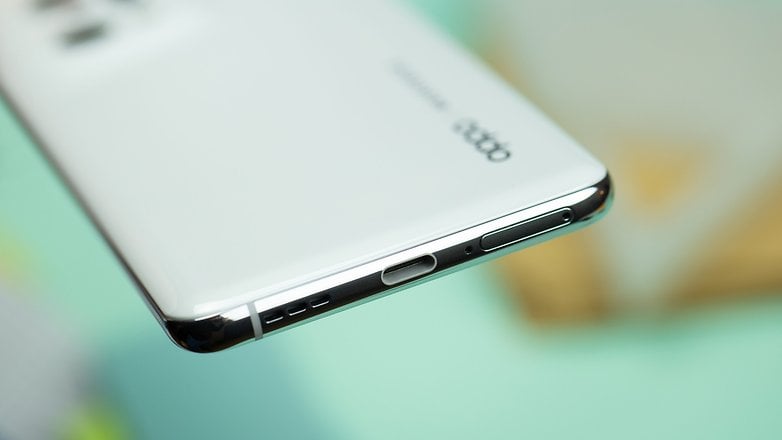
Both the UltraVOOC 240 and Realme's UltraDart 200, also announced during MWC 2022, have no release date yet. Both companies however announced a 150 W version coming in the second quarter of 2022.
It is worth pointing out that to use Oppo/OnePlus/Realme/Vivo/iQOO fast charging standards you need to use a compatible adapter, which only those brands supply.
Xiaomi HyperCharge
After years of not using any kind of branding for its fast chargers, Xiaomi decided to challenge BBK's brands and announced the Xiaomi 11T Pro in 2021 with its HyperCharge adapter. With up to 120 W, the 11T Pro was fully charged in just 17 minutes in our review. Curiously, the same phone is also listed on Qualcomm's official Quick Charge 5 support list, keeping Xiaomi's tradition of offering standards-compliant phones and chargers.
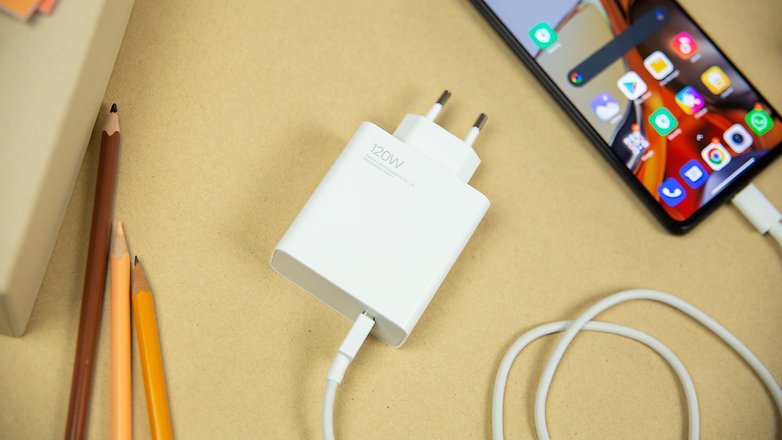
Apple's fast charging via Lightning
Since a few iPhone generations, you can also charge Apple smartphones about halfway in half an hour - and that although the manufacturer from Cupertino still sticks to its Lightning standard instead of switching to USB-C as well. However, this only applies to the charging ports on the iPhone models themselves; Apple equips its own power adapters and also its iPads with USB-C.
If you want to fast-charge your iPhone, Apple recommends power adapters with at least 20 watts and also advises to only use Apple's own USB-C to Lightning cables. This is especially relevant when you use a MacBook with a USB-C charger. Since these offer at least 61 watts, fast charging also works via this. You can also use third-party chargers with the required power output. This is especially important since the iPhone 12, because Apple decided to remove the charger from the phone's retail box.
MediaTek's Pump Express 4.0
Not to skip over Qualcomm's rival, the Taiwanese SoC manufacturer also announced its own fast-charging standard. But outside of a blog post in 2018 and a hot site, the initiative doesn't seem to have caught off with phone brands...
Is fast-charging harmful to the battery?
After we have only discussed a look at the advantages of super-fast charging of smartphone batteries so far, we should consider whether the whole thing is so useful at all. When do you charge your phone? Do you wait until it's really empty or does the phone go to the charger every night?
Personally, I charge my phone every evening. Since I work a lot with my smartphone, it's usually very necessary. But I don't care how quickly the phone gets full when I'm lying in the next room (cue digital detoxing) and sleeping. In order not to strain the battery, I usually simply turn off fast charging - but is that even necessary?
Especially now that Android brands are promising more than two years of software support for their phones, the usual benchmark for which batteries are generally tested may not be enough for the lifespan of the phones.
We have talked to specialists about whether fast charging actually damages our phones, and the answers didn't seem to ease the NextPit Community. Read the linked article and if you are still not comfortable with using fast charging, the feature can usually be turned off on most phones.
Is fast charging also possible wirelessly?
If your phone has an integrated QI coil and you have already equipped your home with corresponding charging stations, you certainly do not want to return to the wired charging world. Wireless charging is finding its way into many more phones and could even work over several meters in the near future. Aside from the increased distance, however, it's in the increased efficiency that the future of wireless charging lies.
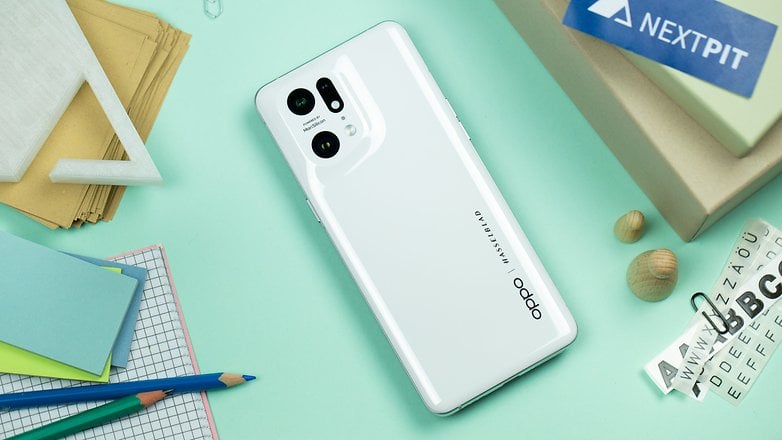
Wireless charging in commercial devices has also developed away from industry standards, while the ubiquitous Qi specification goes up to 15 W. We can find phones capable of charging way faster than that, but for that again, we have to look at the Chinese brands.
Oppo, for example, announced its AirVOOC 65 W charger but offers up to 50 W with its current (in 2022) flagship Find X5 Pro, a wattage already found on the Xiaomi Mi 10 Ultra, released in 2020. Similar to the wired chargers, both models require special charging pads to reach those numbers, so you cannot benefit from the higher speed in charging stations integrated into IKEA lamps.
While this is all very convenient, you should consider the efficiency of wireless charging. Because not only is this strongly dependent on the positioning of the charging coils, but energy is also always lost during inductive charging. Thus, it is not really efficient to place the phone on a Qi charging station in the evening.
What about you? What are your charging habits? Do you prefer wired or wireless chargers? Do you have fast-charging power banks as well? Share your experiences in the comments below!
Article updated in March 2022 with the latest announcements in the field. Comments posted before the date were not deleted and may refer to previous versions of this page.






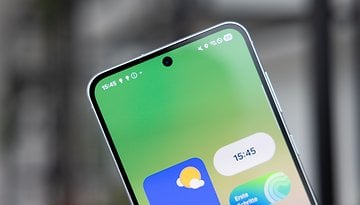
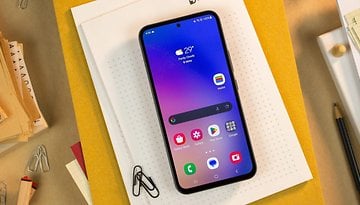






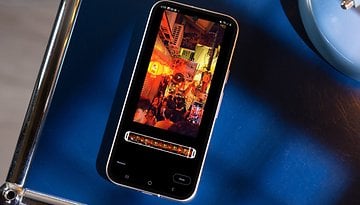
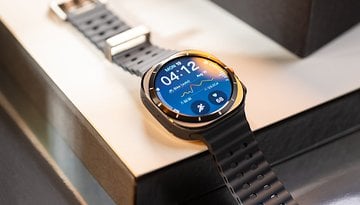


Battle of the dead-end hype trademarks.
Hi All! I have an Essential PH-1 phone and LOVE the Power Delivery charger that came with the phone! I can charge the PH-1 from dead to 100% in 1.12 hours. Most other phones (ie; Samsung, One+) take 1-1/2.
For me it was a revealation that My Galaxy S8 DOES support Power Delivery and so does the Dex station. I take a multiport adapter for my trips because there is always more than one device to charge. Dragging the OOTB power adapter wasn't an option (and the Dex wouldn't work with the QC port although the voltage and apmperage underneath is the same).
First I powered the Dex station with a Samsung power bank that (as the only one) had Samsung's Fast Charging (and was like 2-3 times overpriced for the capacity). It also has one port so I had to drag another powerbank to charge my mobile monitor in places where the power outlet was too far from a table or desk.
Thanks to this PD unification I already have a multiport adapter with PD ( so I can plug in the station, the monitor and some other stuff to one charger where the power outlet is near) and I'm also waiting for a multiport powerbank with PD for places where I can't rely on a charger. The power bank with the capacity of 20000 mAh is actually cheaper than the 2 times smaller power bank from Samsung.
So yes, I'm all in for the PD instead of proprietary charging standards.
While the battle is ongoing you can do like I did. I look and find for chargers which support both standards :).
For my car I got the LinkOn Power Delivery and Quick Charge car charger. So far it works well and it is very compact.
The problem is always the authenticity of a charger. What happens if or when your phone's original charger doesn't work anymore? You'll have to decide whether buy a new original (very expensive) chsrger, which in most cases is also quite difficult to find, or quickly buy the first (cheap) charger you find on Amazon or eBay, at the risk of messing up your phone, which normally you don't really think about because the average consumer doesn't know or care that much about the specs and they think (or hope?) that all chargers are compliant to the industry standards. That's why we should absolutely encourage a standardised charging technology that should also be cheap to produce, so that even the companies who don't comply with the normal standards to save money decide to embrace it.
I use chargers and cable from a great manufacturer JuicEBitz - they sell a dual USB "JuiceBrick" output DC5/3.1A with intelligent charging. This means both ports deliver the required charge as needed by the type of device. They also sell high quality USB cable with 20AW - 24AW fully shielded, this is the most important aspect of the charging system as poor cable will impact on the consistency of the charge & can lose a lot of charge before it reaches the device.
Peace ??
honestly one thing I certainly dont like is that wan too many USB-C devices had QC3, making sure that most multiport chargers with a USB-C Port included use QC3 on the USB-C. right now I have only seen one of those that does USB-PD, which is sad as hell.
Nothing can touch dash charge tho!
You neglected to note that the USB C spec specifically states that proprietary charging technologies, such as QC3, are forbidden. Despite that, for example, my LG V20 and OEM charger violate the spec by including QC3--as do a number of other phones and after-market chargers. Benson Leung explains all this in detail.
But then I won't be able to use my old QC3 chargers with it. As long as it doesn't hurt anything, what's the big deal?
Why do you suppose that the USB C spec forbids QC3? You can find out by doing a Google search on Benson Leung (a Google engineer) and and Nathan K -- reading the reasons and learn a lot more about USB C. A non-compliant USB-C charger destroyed Leung's laptop. Amazon has been deleting USB C cables, chargers, and external batteries that violate the USB C spec. Some manufacturers have responded to Leung by redesigning their USB C products. Others have not--caveat emptor.
well even if usbc isnt android is strongly against it and it may be just a matter of time until it gets axed into oblivion
BTW, I don't use the OEM AC charger that came with my LG V20, I use a USB C compliant charger--PD charging is fast.